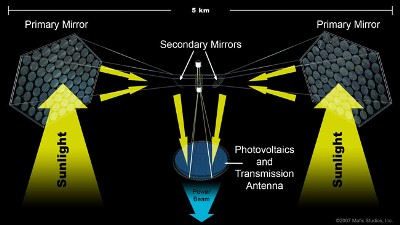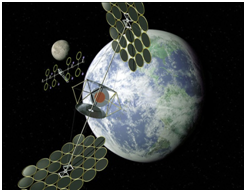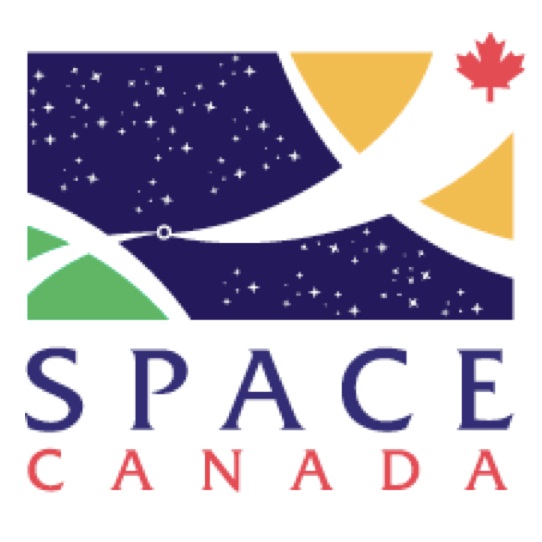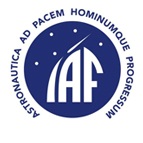3rd Space Solar Power International Student and Young Professional Design Competition
The Space Generation Advisory Council is pleased to announce its partnership with the International Astronautical Federation’s Space Power Committee (SPC) to organise and run the 3rd Space Solar Power International Student and Young Professional Design Competition.
Competition
The competition aims to challenge entrants to submit a technical paper for a new and innovative technical concept for Space Solar Power (SSP). SSP, in its typical implementation and for the purposes of this competition, is the idea of transmitting power harvested from the sun in space down to Earth.
The winning entrant will be given up to USD 2000 to cover travel costs to Toronto, Canada, to present their paper at the 2014 Space Generation Congress (SGC) and to present a poster at the International Astronautical Congress (IAC).
For more information please read the SSP Competition Rules.
SSP Background and Motivation

The idea of collecting the Sun’s energy in space where it constantly shines to transmit it down to Earth wirelessly has been around and studied since the end of the 60s. In the context of growing energy needs and climate change concerns, the past decade has seen a renewed interest for Space Based Solar Power (SBSP), starting in 1995-97 with NASA’s “Fresh Look Study” followed in 1998 by the “Space Solar Power Concept Definition Study” and in 1999 by the SERT.
In parallel, Canada and Japan initiated studies on space solar power like ESA with the “Space Exploration and Utilisation” (SE&U) study by DLR in which the European Sail Tower Solar Power Satellite (SPS) concept based on laser power transmission was developed.
In 2001, a committee examined the SERT study for the US National Research Council (NRC) and concluded that significant changes had been made since the 1977-81 studies that might make it worthwhile for the US to invest in either SSP or related technologies.
In 2003/2004, a first assessment of the broad scale introduction of terrestrial and space based solar power in Europe was performed under a project of the ESA Advanced Concepts Team.
In March 2007, the US National Security Space Office (NSSO) Advanced Concept Office initiated an architecture feasibility study resulting in a report issued in October 2007. One of the conclusions was that “the technical feasibility of the concept has never been better”. The same year, URSI (Union Radio Scientifique Internationale) published a report partially dedicated to the assessment of SPS microwave power transmission interaction with environment, radio astronomy, telecommunications and human health.
In its October 2009 report aimed at assessing the use of SBSP to supply power on demand for military application, the US Naval Research Laboratory (NRL) also concluded that SBSP concept was technically feasible but required R&D to overcome remaining system risks in many areas.
Most recently, in November 2011, the International Academy of Astronautics published the report “Space Solar Power - The First International Assessment of Space Solar Power: Opportunities, Issues and Potential Pathways Forward”; this report discusses in detail all the aspects related to the production of energy from space. It concludes again that it is technically feasible to produce energy from space and includes several recommendations on the way forward.
In the light of growing need for renewable energy alternatives and the above studies which all agree on the technical feasibility of SBSP, it is time to involve students and young professionals from both space and energy sectors to get their creative ideas about SBSP. Competitions and challenges have proven to improve and stimulate the development of technologies in many different area. This particular competition will challenge students and young professionals worldwide to come up with new, original Solar Power Satellites (SPS) designs and ideas.
For more information please read the SSP Competition Rules.
The Competition

The competition aims to challenge entrants, in this case individuals and small teams (1-3 people) between the ages of 18-35, to submit a technical paper for a new and innovative technical concept for Space Solar Power (SSP). SSP, in its typical implementation and for the purposes of this competition, is the idea of transmitting power harvested from the sun in space down to Earth.
The entrant shall describe in technical detail their idea on a new SSP technical concept taking into consideration the use of current or realistic near-future technologies in a single technical paper (maximum length of 10 pages).
The competition is intentionally broad. Contestants should attempt to understand the scientific, engineering, economic and social challenges involved.
The submitted papers will be judged based on, but not only, aspects such as originality, feasibility, economic viability or novelty with previously proposed concepts.
After the competition’s results announcement, the winning entry will be requested to prepare a 3 to 5 min long executive summary video as well as both IAC and SGC presentations.
Submissions can be made to ssp@spacegeneration.org.
For more information please read the SSP Competition Rules.
THIS YEAR'S WINNER
With his paper on “SMART SHAPE CHANGING STRUCTURES FOR SPACE BASED SOLAR POWER APPLICATIONS”, Thomas Sinn won the 3rd Space Solar Power Competition in 2014.
Submission deadline: 30st June 2014 (23:59 UTC)
Winners announced: 1st August 2014
Space Generation Congress 2014 (Toronto, Canada): September 25 – 27, 2014
International Astronautical Congress 2014 (Toronto, Canada): September 29 – October 3, 2014
Contact
If you have any further queries about the Space Solar Power Competition, please contact Noemie Bernede or Philipp Maier by writting email to ssp@spacegeneration.org.


